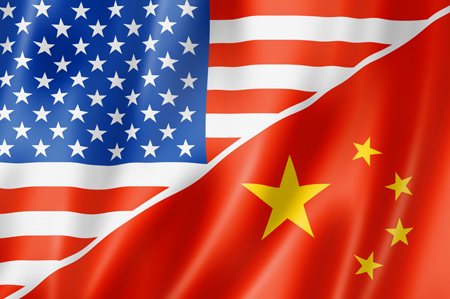Column: China Must Balance U.S. Trade Deal with Fostering its Own Ag Sector
Category: Trade

(Reuters) – China is facing a tall task in the agriculture sector, as an agreement with the United States could have the Asian country buying far more goods than ever before, but potentially at the expense of its own industry and other trade partners.
On Wednesday, Reuters reported that the United States and China have begun to outline the specific commitments that a full trade deal would cover, with one of those items being agricultural purchases by China.
Bloomberg reported on Thursday that China is expected to propose an additional $30 billion in U.S. agricultural exports per year. This purportedly hinges on a wider trade deal being met.
The United States and China have been trying to hammer out a trade deal before Friday of next week, after which U.S. tariffs on Chinese goods are set to increase. However, U.S. President Donald Trump has recently suggested that March 1 may no longer be a hard deadline.
China drastically increasing U.S. imports could be great news for U.S. agriculture, which has been suffering since mid-2018 when the trade war escalated between the two sides. U.S. exports of soybeans, the primary offering to China, are down about 36 percent on the year as a result.
It is not yet clear what a $30 billion trade deal would look like, but it would represent a large chunk of China’s annual farm imports. And it might be difficult for China, which is in the midst of its own agricultural reform, to juggle both tasks of increasing imports while stimulating its rural economy.
NUMBER CONTEXT
Chinese agriculture imports from all sources totaled a record $126 billion in 2017, with soybeans and other oilseeds taking up the largest share.
The United States exported $24 billion worth of agricultural and related products to China in 2017, which would be about 19 percent of China’s total haul.
A value of $30 billion in goods amounts to roughly 24 percent of China’s total 2017 agriculture imports, and this significant share is why some market participants are struggling with the proposal’s feasibility.
To put further context around the numbers, some $14.8 billion of U.S. ag exports to China in 2017 were bulk commodities, and soybeans took up $12.3 billion of that. The remaining $2.5 billion went to items such as cotton, wheat and corn.
In the same year, the United States exported $2.4 billion in consumer-oriented goods to China. That includes things like pork, beef, dairy, nuts and fresh produce.
SOMEONE LOSES
If China in fact purchases $30 billion more in U.S. agricultural products, it could hurt both Chinese farmers and other trade partners.
On Tuesday, China laid out its annual plans for rural policy, which will continue the focus on improving rural income levels and living standards while also promoting domestic production.
Chinese farm incomes have suffered in recent years with rising production and labor costs, high product inventory and cheaper imports from abroad. Government purchase prices, which were eliminated for corn but remain for wheat, have generally been much higher than global prices in recent years.
This year’s plan calls for “stable” grain production and an increase in the production of oilseeds, the latter of which can be stimulated through increased subsidies, especially for soybeans. The rest of the domestic needs would be covered by imports.
Despite the effort to boost domestic output, China’s agriculture minister clarified on Wednesday that the country will still very much rely on imports of soybeans, highlighting that the United States is an “important partner” in that effort.
The idea of China adding $30 billion to its annual U.S. agriculture imports raises questions as to how this would stimulate the rural Chinese economy, given the competition the additional goods would create.
A $30 billion increase in ag imports is considerably larger than any natural year-on-year progression in Chinese demand, especially given China’s recent value of total ag imports. Inevitably, demand from other sources would have to be displaced.
This could be bad news for other trade partners. Brazil is China’s primary soybean supplier, as more than 70 percent of its soy exports land on Chinese shores. Argentina’s main trading partner for raw soybeans is also China.
Australia and Canada are major suppliers to China in feed grains such as wheat and barley, and Ukraine has been increasingly important in corn trade in recent years. China’s grain imports are much smaller relative to those of oilseeds, but the trade relationships are still important for the individual suppliers.

